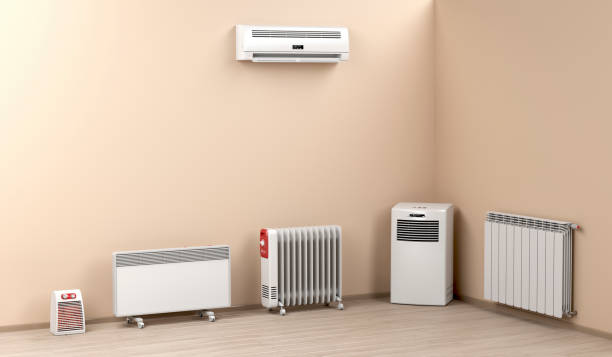Some Ideas on 1 Source Portable Air You Need To Know
1 Source Portable Air Things To Know Before You Get This
Table of ContentsHow 1 Source Portable Air can Save You Time, Stress, and Money.Some Known Details About 1 Source Portable Air Our 1 Source Portable Air DiariesThe 1 Source Portable Air PDFsExamine This Report on 1 Source Portable Air
Running expenses are based upon an electrical power price of 40c/kWh. The expenses for 3 months' usage in winter are based on 500 hours use, or around 6 hours per day for 3 months. Optimum heat result is based upon the maximum wattage of the designs we've examined (we concentrate on higher electrical power heating units).
This depends upon what cost you're considering in advance purchase, or running price? Customarily, there are compromises with either choice. Typically, little fan heating systems are less costly to acquire, but can have greater running costs. Oil column heating systems will be the cheapest on the marketplace to run (typically) however only by a narrow margin in advance of convection heating units (like panel and micathermic panels).
Some Ideas on 1 Source Portable Air You Need To Know
If you have a relatively easy to fix ceiling follower, it'll aid spread the warmth around the space a lot more uniformly. A number of expensive heating systems have fallen short to excite our testers, while some less expensive models make for surprisingly excellent buys.
As the name suggests, they radiate warmth from a red-hot home heating aspect (so the family will have to take turns resting in front of it). There are flooring and wall-mounted designs offered. Radiant heaters are reasonably affordable. They have a cosy glow and individual warming result, like being in front of a fire.
The reasonably subjected home heating component can be a fire and security hazard. For instance, a piece of clothing went down over it may spark, or tiny kids playing around a flooring model might burn themselves, so take care. Radiant heating systems usually cost in between $20 and $200. Oil-filled column heating systems don't really burn oil they utilize electricity to warm the oil that's sealed inside their columns or 'fins'.
Facts About 1 Source Portable Air Uncovered
Some column heaters aren't even oil-filled however rather make use of various other product or home heating modern technology to function similarly - 1 Source Portable Air. The risk of fire with an oil column heater is low compared to other heater types, however never ever no. Oil heating units do not have subjected aspects like radiant heating units do, and their surface area temperature is lower than numerous other heater types (their large area makes up for it)
Oil column heating systems will not explode, and while they do not melt their oil to produce warm, it's still combustible, so there is a fire danger if the oil leakages, if the heating system topple and leakages, or if combustible things or textile enter into contact or fall on the heating system. You should work out the very same degree of care with oil heating systems when it comes to other heater kinds, and never ever hang towels or clothes over one to dry them use a drying out shelf instead, at the very least one metre away.
Column heating systems are especially useful in rooms where they'll be turned on for extended periods of time or where they'll operate neglected, such as over night in a bedroom. The surface areas you're most likely to touch on a column heating system don't obtain as warm as other sorts of electrical heating systems. You can utilize a ceiling follower on extremely low rate to help site web the column heater to disperse the warm faster and extra uniformly.
If there's not much air activity (for instance, if you're sitting analysis or watching television), the warmth might not be dispersed equally. Oil-filled column heaters normally cost between $50 and $450. Convection and panel heating units attract chilly air over an electrical home heating element. The warmed up air then leaves the heating unit and climbs in the direction of the ceiling, while cooler air steps in to change it.
What Does 1 Source Portable Air Do?

Convection and panel heaters are more portable than their oil-filled column heating unit counterparts since they're dramatically lighter. They'll warm you could try these out the air in an area equally and swiftly. Like a column heating unit, you can utilize a ceiling fan on extremely reduced rate to distribute the warm faster and more evenly. Some versions, specifically panel heating systems, are comparatively expensive to acquire.

The Definitive Guide for 1 Source Portable Air
Follower heaters are frequently smaller and a lot more portable than other electric heating units. They also can be found in the type of tower follower heaters, which can be much better for distributing warmth around bigger spaces as a result of their taller profile. They can warm the air in a room a lot more rapidly, uniformly and promptly than some other heating system types.
They can be fairly noisy with the fan on complete power, though are typically sensibly quiet at reduced fan rates. Fan heating units (ceramic or otherwise) usually cost in between $60 and $900. Ceramic follower heaters aren't necessarily any kind of different in rate to non-ceramic models. A fairly current participant into the consumer market, infrared heating systems warm the room like the sun warms your face (without the UV rays so no risk of skin cancer cells). 1 Source Portable Air.